Here’s how to make herbal sunscreen, plus details on “edible sunscreens,” herbs for after-sun care, and common-sense solutions for sun safety.
How to Make Herbal Sunscreen
Sun Safety and DIY Herbal Sunscreen
Growing up, I was always told to put my sunscreen on. “Any time you are outside, you should be wearing sunscreen,” said the dermatologist. “Every bit of exposure adds up. You should wear it every day, no matter the weather or time of year! Even in the shade! Even indoors!” Yes, I really was told that.
I hated the feeling of sunscreen on my skin, and young Scott wasn’t good at understanding concepts like “later in life” or “when you’re old.” I wore it sometimes, if I was going to be out all day, or if I went swimming. But I usually just got a burn early in the summer and relied on a tan to carry me through the season.
You May Also Enjoy:
“102°F to 85°F: Off-Grid AC and Survival Cooling”
Later, as an adult, I started hearing rumblings of the dangers of sunscreen chemicals. Some voices were even saying that sunscreens caused skin cancer. That’s ironic. It got me curious. I did a little digging … and what I found was startling.
The rates of melanoma in the US have risen over time, despite the increased use of sunscreens and our spending more time indoors.1)Plourde, Elizabeth. Sunscreens–biohazard: Treat as Hazardous Waste. Irvine, CA: New Voice Publications, 2012. But let’s not leap ahead too quickly. We don’t want to oversimplify things. Cancer is a complex topic with many contributing factors. Still, the correlation between sunscreen and cancer merits a closer look.
Chemical Barriers
Are the Chemicals Harmful?
Chemical sunscreens have some problems. Their active chemicals have a habit of being approved as safe only to be discovered as harmful years later.2)Hodges, ND, Moss, SH, and Davies, DJ. “Evidence for increased genetic damage due to the presence of a sunscreen agent, para-aminobenzoic acid, during irradiation with near ultraviolet light [proceedings].” J Pharm Pharmacol 28 (1976). They have a history of causing allergic reactions.3)Scheuer, Elyse, and Erin Warshaw. “Sunscreen Allergy: A Review of Epidemiology, Clinical Characteristics, and Responsible Allergens.” Dermatitis17, no. 1 (2006): 3-11. doi:10.2310/6620.2006.05017. And while an approved chemical might be safe in its intact form, it can react to other chemicals or break down under sunlight, creating multiple untested chemicals compounds.
You May Also Enjoy:
Many of the ingredients in sunscreens are endocrine disrupters.4)Kunz, Petra Y., and Karl Fent. “Multiple Hormonal Activities of UV Filters and Comparison of in Vivo and in Vitro Estrogenic Activity of Ethyl-4-aminobenzoate in Fish.” Aquatic Toxicology79, no. 4 (2006): 305-24. doi:10.1016/j.aquatox.2006.06.016. That means they alter hormone production and function. And altering hormones necessarily means altering growth and development.
We’re told that it’s especially important for kids to wear sunscreen, because their skin is thinner and more vulnerable to the sun’s rays. But their skin is also more permeable to sunscreen chemicals, and their smaller size means that we’re putting proportionally more sunscreen on them.
Looking for more information on the hazards of commercial sunscreens and safe alternatives? Check out “Sunscreens—Biohazard: Treat as Hazardous Wastes” by Elizabeth Plourde, PhD.
It gets worse yet. Sunscreen chemicals have been found in breast milk, and may cross the placenta to reach unborn babies.5)Balakrishnan, Biju, Kimiora Henare, Eric B. Thorstensen, Anna P. Ponnampalam, and Murray D. Mitchell. “Transfer of Bisphenol A across the Human Placenta.” American Journal of Obstetrics and Gynecology202, no. 4 (2010). doi:10.1016/j.ajog.2010.01.025.6)Ye, Xiaoyun, Zsuzsanna Kuklenyik, Larry L. Needham, and Antonia M. Calafat. “Measuring Environmental Phenols and Chlorinated Organic Chemicals in Breast Milk Using Automated On-line Column-switching–high Performance Liquid Chromatography–isotope Dilution Tandem Mass Spectrometry.” Journal of Chromatography B831, no. 1-2 (2006): 110-15. doi:10.1016/j.jchromb.2005.11.050. So even infants and the unborn are being exposed.
Do Chemical Barriers Actually Protect You?
But at least we’re protected from sun damage, right? Well, not exactly. There are different types of ultraviolet light. When it comes to sun damage, we’re usually concerned with UVA and UVB light. Both cause damage, but in different ways. UVB light is absorbed in the outermost layer of skin. It causes sunburns, but also stimulates the creation of vitamin D (more on that below). UVA light penetrates deeper and is more associated with skin aging. They both contribute to skin cancer, though sources will disagree on which is more dangerous.
You May Also Enjoy:
“Top 10 Health Benefits of Stevia”
“Equisetum Hyemale (Horsetail): The BEST Plant for Tooth Health + 8 More Benefits!”
The SPF rating on your sunscreen only applies to UVB light, not UVA. Most sunscreens only protect you from UVB light. And even so-called broad-spectrum sunscreens often provide only the minimum protection needed to legally be labeled as such. A scale for UVA protection does exist, but many broad-spectrum sunscreens do not list it. This makes it difficult to assess a sunscreen’s actual protective factor.
This is all very important! If you’re only protecting yourself from UVB rays, you’re preventing a sunburn, but not the DNA-damaging effects of UVA light that can lead to cell aging and cancer. By delaying the burn, we’re encouraged to stay out in the sun longer, exposing us to more UVA light than if we’d worn no sunscreen at all.
Physical Barriers
Some sunscreens use a strategy of physical barriers, rather than chemical ones. Titanium oxide (TIO2) and zinc oxide (ZNO) can effectively block both UVA and UVB rays. And unlike chemical sunscreens, these metals are unlikely to provoke allergic responses in people.
That’s a really good start. But regular sized TIO2 and ZNO particles leave a white residue on the skin. The residue is harmless, but we’ve decided that it looks goofy. Thus, nanoparticles were introduced.
You May Also Enjoy:
“Summer Kitchen in a Suitcase?”
“Homemade Hummingbird Food: 3 Ways to Save Time & Money”
“19 Benefits of Hibiscus: Blood Pressure Regulator, Cancer Fighter, Liver Protector, and Much More!”
Nanoparticles are almost unimaginably tiny, 1/5,000 the size of a human hair. They allow more visible light to get through, making them appear more clear. That’s good. But they also let more ultraviolet light through. That’s bad.
They can also absorb through your skin, age it, and generate dangerous byproducts.7)Shukla, Ritesh K., Vyom Sharma, Alok K. Pandey, Shashi Singh, Sarwat Sultana, and Alok Dhawan. “ROS-mediated Genotoxicity Induced by Titanium Dioxide Nanoparticles in Human Epidermal Cells.” Toxicology in Vitro25, no. 1 (2011): 231-41. doi:10.1016/j.tiv.2010.11.008. They can even cross the blood-brain barrier.8)Wu, Jianhong, Wei Liu, Chenbing Xue, Shunchang Zhou, Fengli Lan, Lei Bi, Huibi Xu, Xiangliang Yang, and Fan-Dian Zeng. “Toxicity and Penetration of TiO2 Nanoparticles in Hairless Mice and Porcine Skin after Subchronic Dermal Exposure.” Toxicology Letters191, no. 1 (2009): 1-8. doi:10.1016/j.toxlet.2009.05.020. How bad is that? Check back in 30 or so years when the long-term data comes in. I’d rather not be a guinea pig, so I’m opting out on nanoparticles.
The Vitamin D Paradox
Even if you have a safe and effective sunscreen (DIY instructions are below), you might not want to wear it all the time. Vitamin D is produced as a result of UVB rays hitting the skin. Remember, this is the type of ultraviolet light that most sunscreens are extra good at blocking out.
The more sunscreen we wear, the less vitamin D we produce, and the reduction is not insignificant. An SPF of only 8 can reduce vitamin D production by 92.5%. SPF 15 reduces its creation by more than 99%.
The reason this matters is because vitamin D plays a huge role in keeping us healthy, and affects the development and function of our bodies. One particularly relevant benefit is that it helps to prevent many forms of cancer, including skin cancers.9)Grant, William B., and Sharif B. Mohr. “Ecological Studies Of Ultraviolet B, Vitamin D And Cancer Since 2000.” Annals of Epidemiology19, no. 7 (2009): 446-54. doi:10.1016/j.annepidem.2008.12.014.
You May Also Enjoy:
“How to Use Vitamin D to Help Fight the Flu”
So by trying to avoid sunburns, we’re often just preventing the production of vitamin D and increasing our total exposure to UVA rays. Then the sunscreen chemicals absorb into our skin, disrupting our hormones and possibly further contributing to cancer risks. Again, I don’t want to oversimplify this. It’s a complex topic. But sunscreens aren’t looking good right now.
So should we avoid sunscreens and just take the burn? No. Sunburns are bad, too. But how can we safely avoid sun damage?
Smart Sun Strategies
You can protect your skin without resorting to chemicals and nano-sized particles. And if you do get a burn, you can help stimulate your natural healing processes to repair the damage. A few suggestions are common sense:
- Cover Up: Wear long sleeves and a wide brimmed hat when you’re going to be out in the sun for extended periods.
- Avoid Peak Exposure: Stay indoors or in the shade from 10:00 a.m. to 2:00 p.m.
- Use a Natural, Nontoxic Sunscreen: Here we go . . . .
DIY Herbal Sunscreens
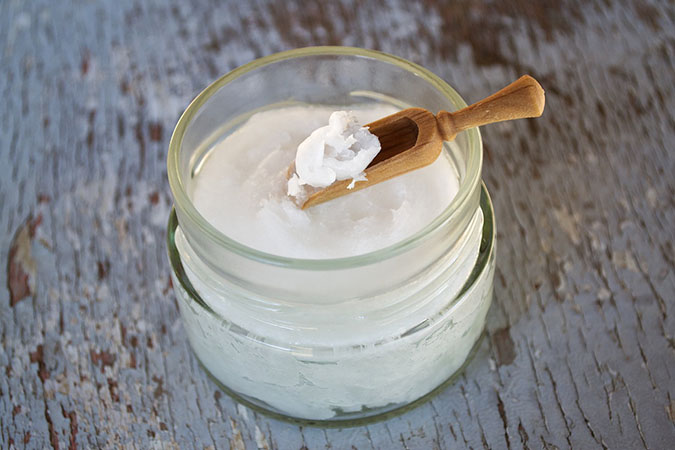
Image by DanaTentis from Pixabay
We all need some sun exposure to manufacture vitamin D. People with darker skin or those who live very far from the equator need more exposure. But many of us will be able to meet the needed exposure and then some. How do we protect ourselves from excess solar radiation, without resorting to dangerous chemical or nano-metal sunscreens? You make your own, of course!
Olive oil and coconut oil have an SPF rating of around 7 or 8, all by themselves, meaning you could stay out 7 or 8 times longer before starting to burn.10)Plourde, Elizabeth. Sunscreens–biohazard: Treat as Hazardous Waste. Irvine, CA: New Voice Publications, 2012. Just rub it right on your skin. This may not sound impressive compared to the SPF 50 you’re likely to see in stores. But remember that we don’t necessarily want to block out all of the UV radiation. We want some for the production of vitamin D, and we still want to burn if we stay out too long. Why? Because these oils, like most commercial sunscreens, are better at blocking UVB rays than UVA, and we need our bodies to tell us if we’re getting too much sun.
Several essential oils, such as lavender, eucalyptus, and carrot seed, also have sun-protecting power and can be mixed with your olive or coconut oil. You could also infuse the oil with protecting herbs, such as lavender, St. John’s wort, or even tea.
You May Also Enjoy:
“Dandelions: 31+ Uses for the King of Weeds”
“Calendula: Lymph Mover, Detoxifier, Cancer Fighter, and Skin Beautifier”
When it’s time for some serious outdoor activity, you can mix zinc oxide or titanium oxide into your oil. This will give you a higher level of sun protection, and it will block both UVB and UVA rays. Just remember to buy the non-nano sized particles. Also, wear a mask and goggles while working with this powder. Once it’s fully incorporated into the oil, it’s perfectly safe. But you don’t want to get the dry powder in your lungs or eyes.
The percentages are flexible, but many people use between 5% and 35% (by weight) zinc oxide or titanium oxide in their sunscreen formulas. The more powder you use, the higher the protection factor. You can also add vitamin E, shea butter, or your own special additions. Here’s an example formula:
Super Simple Sunscreen Formula
- 1 ounce coconut oil
- Zinc oxide (0.5 – 0.35 ounce)
If your coconut oil has solidified, heat it in a sauce pan on warm. Pour the liquified coconut oil into a disposable (or compostable) container. Put on a mask and goggles to protect yourself from zinc oxide dust. Stir the zinc oxide into the coconut oil until fully combined. Then pour the mixture into the container of your choice. Remember to reapply your sunscreen frequently, especially after swimming or heavy sweating, and refrigerate it when not in use. It should last for around 6 months.
Looking for something a little fancier? Here are some fun additions. And remember that you can alter the proportions.
- 0.5 ounce shea butter
- 0.1 ounce vitamin E oil
- 15 drops lavender essential oil
- 10 drops peppermint or eucalyptus essential oil
- St. John’s wort (Place the herbs and the coconut oil in a pot on your stovetop. Heat them on low until the oil takes on the color of the herbs. Then strain out the herbs, allow the oil to cool a bit, and add your other ingredients.)
Herbal After-Sun Care
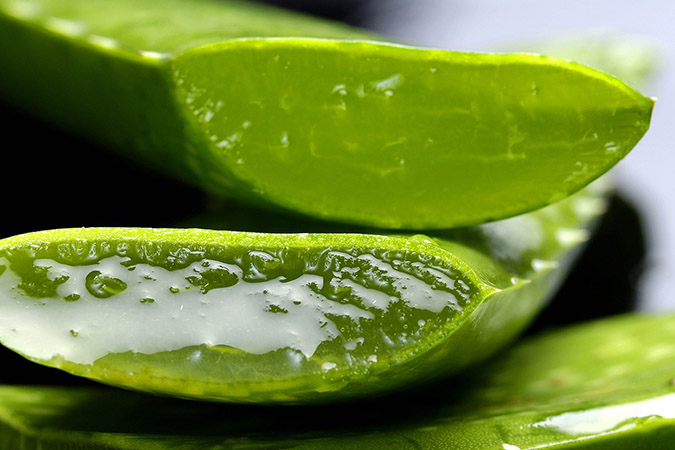
Image by DanaTentis from Pixabay
We also have quite a few plants willing to lend a hand if you’ve already gotten too much sun. A lot of these are the same plants you use to prevent burns. Olive oil is a good choice for nourishing and healing. Coconut oil works really well, too. You can enhance this by infusing the oil with St. John’s wort or lavender. If you don’t have time to infuse the oil with herbs, you can also use essential oils.
You May Also Enjoy:
“Identifying and Using Chickweed”
Of course, the classic sunburn plant is aloe vera. Aloe is easy to grow indoors, so you can have a plant ready wherever you live. There are several strategies for using aloe, but I think the easiest is to slice a leaf lengthwise, then use a spoon to scrape out the slimy innards into a bowl or plate. Try to get only the gel, and not the green, outer leaf. Gently apply the gel to sunburned skin. Store unused gel in the refrigerator.
Mallow family plants are also very soothing and healing to sun-damaged skin, and can be substituted in place of aloe. You can also use the slimy insides of a prickly pear cactus. Scoop it out and use it like aloe gel. You could even split the pad in half and lay it across the skin. Just be sure and turn it right side up!
You May Also Enjoy: “Treating Infections Without Antibiotics” Training Video
Oats are another good choice for relieving sunburn pain. You can soak the oats in water until they are very soft, then gently glop them onto the burned area. Or add oats to your bath water. Herbal baths are a great way to dispense herbal care across your whole body.
You May Also Enjoy: “Oatstraw: Stress Reliever, Love Potion, Brain Booster, and More”
Any plants that stimulate healing could also be added to your care regimen. Comfrey, plantain, and calendula are all good choices for that.
Edible Sunscreen
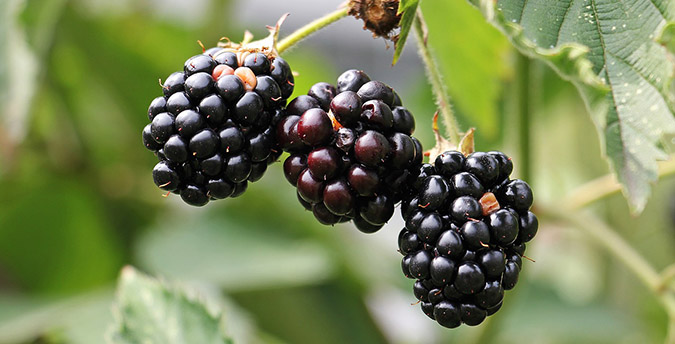
Image by S. Hermann & F. Richter from Pixabay
A diet high in a variety of antioxidants will help your skin resist and repair damage from ultraviolet light. The Oxygen Radical Absorbance Capacity (ORAC) number of a food shows its ability to neutralize free radicals, preventing sun damage before it starts. Most of the foods in your garden have high ORAC numbers. This is especially true of leafy greens and berries. Not all of the plants below will be possible for every garden, but you can still grow your own sunscreen while you Grow Your Own Groceries.
ORAC Scores Per 100 Grams
- Blackberries: 4,000
- Broccoli (boiled): 2,100
- Unsweetened Baking Chocolate: 50,000
- Coffee: 16,000
- Red Cabbage: 2,400
- Carrots: 700
- Eggplant: 900
- Elderberries: 14,700
- Garlic: 5,500
- Green Tea: 1,300
- Onions: 900
- Peach: 1,900
- Plums: 8,000
- Pomegranates: 4,500
- Raspberries: 5,100
- Red Grapes: 1,800
- Spinach: 1,500
- Strawberries: 4,300
- Dried Rosemary: 165,000
- Chili Powder: 24,000
- Ground Cinnamon: 130,000
- Ground Cloves: 290,000
- Curry Powder: 49,000
- Ground Ginger: 39,000
- Ground Nutmeg: 70,000
- Dried Oregano: 175,000
- Fresh Oregano: 14,000
- Dried Parsley: 74,000
- Black Pepper: 34,000
- Ground Sage: 120,000
- Dried Thyme: 157,000
- Ground Turmeric: 127,000
- Vanilla Beans: 122,000
The use of ORAC scores is now in contention, and may be a bit of an oversimplified approach. However, the scores are still a good place to start. For example, researchers found that high-flavanol cocoa ingestion reduced skin reddening by 50% after 6 weeks, and 70% after 12 weeks.11)Stahl, Wilhelm, and Helmut Sies. “Carotenoids and Flavonoids Contribute to Nutritional Protection against Skin Damage from Sunlight.” Molecular Biotechnology37, no. 1 (2007): 26-30. doi:10.1007/s12033-007-0051-z. And I can anecdotally report that my coffee-drinking co-workers have demonstrated greater resistance to sunburns than the non-coffee drinkers.
Conclusion
Don’t get burned by the sun or the sunscreen. Soak up a sensible amount of sunlight, avoiding the peak UV hours. Make your own safe sunscreen for those times you’re going to get too much sun. And be sure to “eat your sunscreen” by loading up your diet with antioxidant rich foods like those listed above.
What Do You Think?
Do you have any bonus sun-safety tips or sunscreen stories? Let us know in the comments!
_______________
This is an updated version of an article that was originally published on July 23, 2019.
The Grow Network is a participant in the Amazon Services LLC Associates Program, an affiliate program designed to provide a means for our team to earn fees for recommending our favorite products! We may earn a small commission, at no additional cost to you, should you purchase an item after clicking one of our links. Thanks for supporting TGN!

Scott Sexton is a TGN Trailblazer, a highly experimental gardener, an unrelenting weed-eater, and a largely non-profit herbalist (much to his wife’s chagrin). When Scott is not teaching foraging classes, testing out theories in the garden, or grazing in the forest, he can be found at his Facebook page, “A Forager’s Guide to the Zombie Apocalypse.”
References
| ↑1, ↑10 | Plourde, Elizabeth. Sunscreens–biohazard: Treat as Hazardous Waste. Irvine, CA: New Voice Publications, 2012. |
|---|---|
| ↑2 | Hodges, ND, Moss, SH, and Davies, DJ. “Evidence for increased genetic damage due to the presence of a sunscreen agent, para-aminobenzoic acid, during irradiation with near ultraviolet light [proceedings].” J Pharm Pharmacol 28 (1976). |
| ↑3 | Scheuer, Elyse, and Erin Warshaw. “Sunscreen Allergy: A Review of Epidemiology, Clinical Characteristics, and Responsible Allergens.” Dermatitis17, no. 1 (2006): 3-11. doi:10.2310/6620.2006.05017. |
| ↑4 | Kunz, Petra Y., and Karl Fent. “Multiple Hormonal Activities of UV Filters and Comparison of in Vivo and in Vitro Estrogenic Activity of Ethyl-4-aminobenzoate in Fish.” Aquatic Toxicology79, no. 4 (2006): 305-24. doi:10.1016/j.aquatox.2006.06.016. |
| ↑5 | Balakrishnan, Biju, Kimiora Henare, Eric B. Thorstensen, Anna P. Ponnampalam, and Murray D. Mitchell. “Transfer of Bisphenol A across the Human Placenta.” American Journal of Obstetrics and Gynecology202, no. 4 (2010). doi:10.1016/j.ajog.2010.01.025. |
| ↑6 | Ye, Xiaoyun, Zsuzsanna Kuklenyik, Larry L. Needham, and Antonia M. Calafat. “Measuring Environmental Phenols and Chlorinated Organic Chemicals in Breast Milk Using Automated On-line Column-switching–high Performance Liquid Chromatography–isotope Dilution Tandem Mass Spectrometry.” Journal of Chromatography B831, no. 1-2 (2006): 110-15. doi:10.1016/j.jchromb.2005.11.050. |
| ↑7 | Shukla, Ritesh K., Vyom Sharma, Alok K. Pandey, Shashi Singh, Sarwat Sultana, and Alok Dhawan. “ROS-mediated Genotoxicity Induced by Titanium Dioxide Nanoparticles in Human Epidermal Cells.” Toxicology in Vitro25, no. 1 (2011): 231-41. doi:10.1016/j.tiv.2010.11.008. |
| ↑8 | Wu, Jianhong, Wei Liu, Chenbing Xue, Shunchang Zhou, Fengli Lan, Lei Bi, Huibi Xu, Xiangliang Yang, and Fan-Dian Zeng. “Toxicity and Penetration of TiO2 Nanoparticles in Hairless Mice and Porcine Skin after Subchronic Dermal Exposure.” Toxicology Letters191, no. 1 (2009): 1-8. doi:10.1016/j.toxlet.2009.05.020. |
| ↑9 | Grant, William B., and Sharif B. Mohr. “Ecological Studies Of Ultraviolet B, Vitamin D And Cancer Since 2000.” Annals of Epidemiology19, no. 7 (2009): 446-54. doi:10.1016/j.annepidem.2008.12.014. |
| ↑11 | Stahl, Wilhelm, and Helmut Sies. “Carotenoids and Flavonoids Contribute to Nutritional Protection against Skin Damage from Sunlight.” Molecular Biotechnology37, no. 1 (2007): 26-30. doi:10.1007/s12033-007-0051-z. |
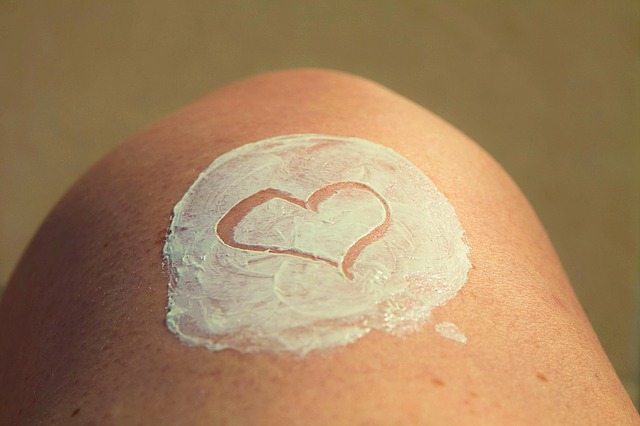
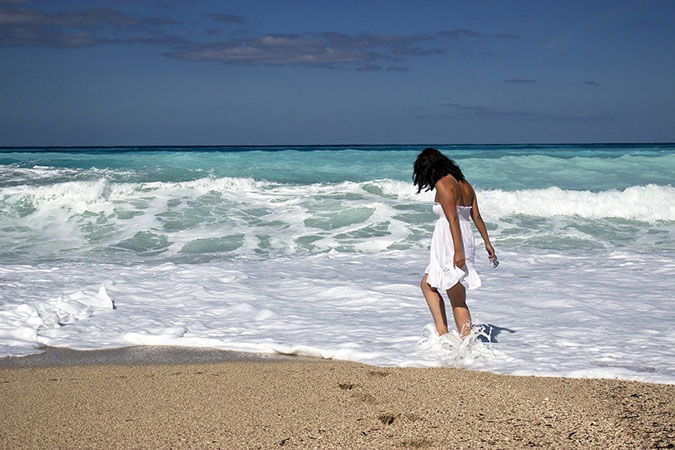

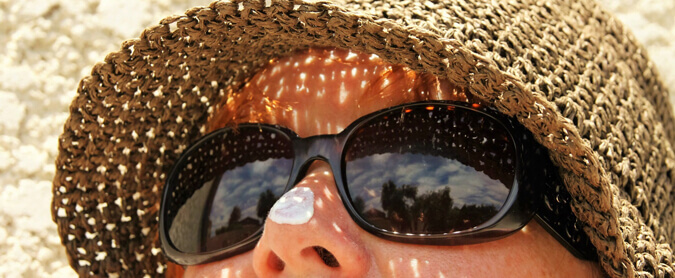

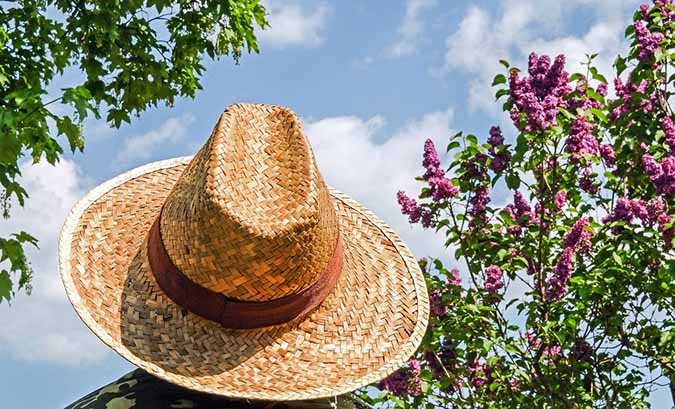

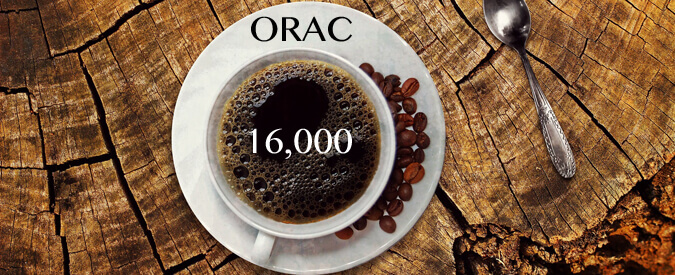







COMMENTS(6)
Thank you Scott, I was looking for a sunscreen formula. I will be making some sunscreen soon. I have some carrot seed oil and some red raspberry seed oil to add to it.
Good article except for one question. Where is the proof or evidence that the Sun causes skin cancer? I have never seen any evidence of that ever. Everyone just says that by repeating what they have heard. All the people I know who are out in the sun dozens of hours every week for 30 years with never any sunscreen (in sunny Florida) have never had a speck of skin cancer. That includes me. I have gone out in the sun for 40 years with no sunscreen and I have never seen a speck of any cancer at all. Why would God make the sun give you skin cancer? Does not sound logical to me. The sun makes the plants grow with no cancer and I never see any animals get cancer being out in the sun all day with no sunscreen. Why would only people get it? Yes we can get sunburn but the body heals that quickly and that is not cancer.
Hey I loved this article Scott. I am a huge fan of big hats and long sleeves first.
My favorite “go to” herb for anything sun related in chaparral. She is an amazing bush that lives in the sonoran desert – and she is built for sun. Sometimes i just take a pinch of her herb and put in a pint of water, let it sit for 20 minutes or so, and then wipe it with a cloth over skint hat got too much sun. Often I need to do 3 to 5 wipes separated by 5 to 10 minutes each. But the nice cooling water is so soothing. And it is such a loving thing to do for your kids or partner.
I’m in the sun for at least an hour a day and often several hours to all day. I wear hats and long sleeves/pants if I’m out all day but usually in shorts and tee shirt. I wear sunscreen on the tips of my nose and ears only. My dermatologist never and I mean never picks a spot that I think could be cancer and says “Yup it is”, he always points to a spot where I see nothing and says there’s one. But compared to my family, who never goes in the sun, I have had no significant problems after 59 years of being outside.
We’re going to make this DIY sunscreen and I’ll use it from now on. Also, Christmas presents to my family.
I’m confused about the suggestion to use St. John’s Wort. Doesn’t St. John’s Wort increase our skin’s photosensitivity? What would be the benefit?
I too want to see the proof that sunlight is the cause of skin cancer. My brother has lived in the sun for 72 years with no issues. A friend of mine lives in the shade and has had dozens of cancers removed.